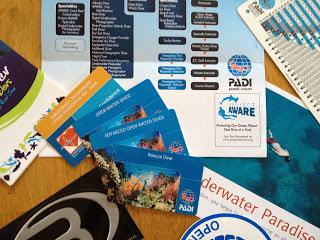
Learning to Dive
So you decide to learn how to dive. Are there any reasons that could prevent you from diving? Your age is not likely to be an issue. It is possible to start as young as eight years of age and dive for as long as your health allows. Most disabilities won’t prevent you from diving. In fact, moving in the weightlessness underwater may even be less of an effort to some. Nor is where you live likely to be a problem. 80 percent of the world’s surface is covered by water. You can dive practically everywhere on Earth. I myself live just south of the Arctic circle and there are certainly no colourful coral reefs here, and the water gets pretty cold at times. Yet, I have done some of my most memorable dives right here in the murky, cold waters of the Baltic Sea.
Like I mentioned in part 1 of this beginner’s guide to diving you’ll get pretty much all you need for a lifetime of enjoyable diving from the basic diving course. Once you complete your diving course, you’ll be qualified to dive to about 16-20 meters. Most likely you won’t settle for that, though. You give diving your little finger, and your entire limb will be in danger...
After you’ve completed the Open Water Diver course, the next move is up to Advanced Open Water Diver. PADIoffers training all the way up to, well, really as far as you want to go. PADI stands for Professional Association of Diving Instructors, and their training will eventually make you a professional diver, if that is what you choose.
Equipment Issues
What dive equipment will you need? Here’s some of the basics:
MaskYou need a mask to be able to see clearly underwater. A diver will need a mask with a nose section to be able to equalize pressure in your ears.
SnorkelWhile you won’t need a snorkel underwater, it comes in handy while you’re on the surface. Swimming with your face in the water is a lot less of an effort than keeping your head above water to be able to breathe. The amount of air you have in the tank is limited, so you don’t want to use it too much on the surface.
FinsFins enable you to move in the water efficiently. You move by kicking, so it is important to get ones that suit you well and are comfortable to use. I don’t honestly have a rule of thumb for this, the best way is to experiment with different sizes, shapes and materials until you find what’s best for you. Most divers use open heel fins that are adjustable and allow them to wear neoprene boots.
Wet Suit / Dry SuitYou will need a wet suit or dry suit to keep you warm. Which of these you will want depends mostly on the temperature of the water you dive in. In cold water, a dry suit keeps you warmer, because it keeps you dry.
Scuba Unit Scuba stands for self contained underwater breathing apparatus. It includes an air tank, a regulator (the part that goes in your mouth), and a BCD or Buoyancy Control Device that helps you to stay neutrally buoyant at whatever depth you are.
Weight systemA wet suit (or dry suit) is buoyant, it makes you float. You need extra weight to be able to dive underwater. The basic weight system is a weight belt.
Dive ComputerDive computer keeps track of your depth and time underwater. It records and gives a lot of information that makes diving safer.